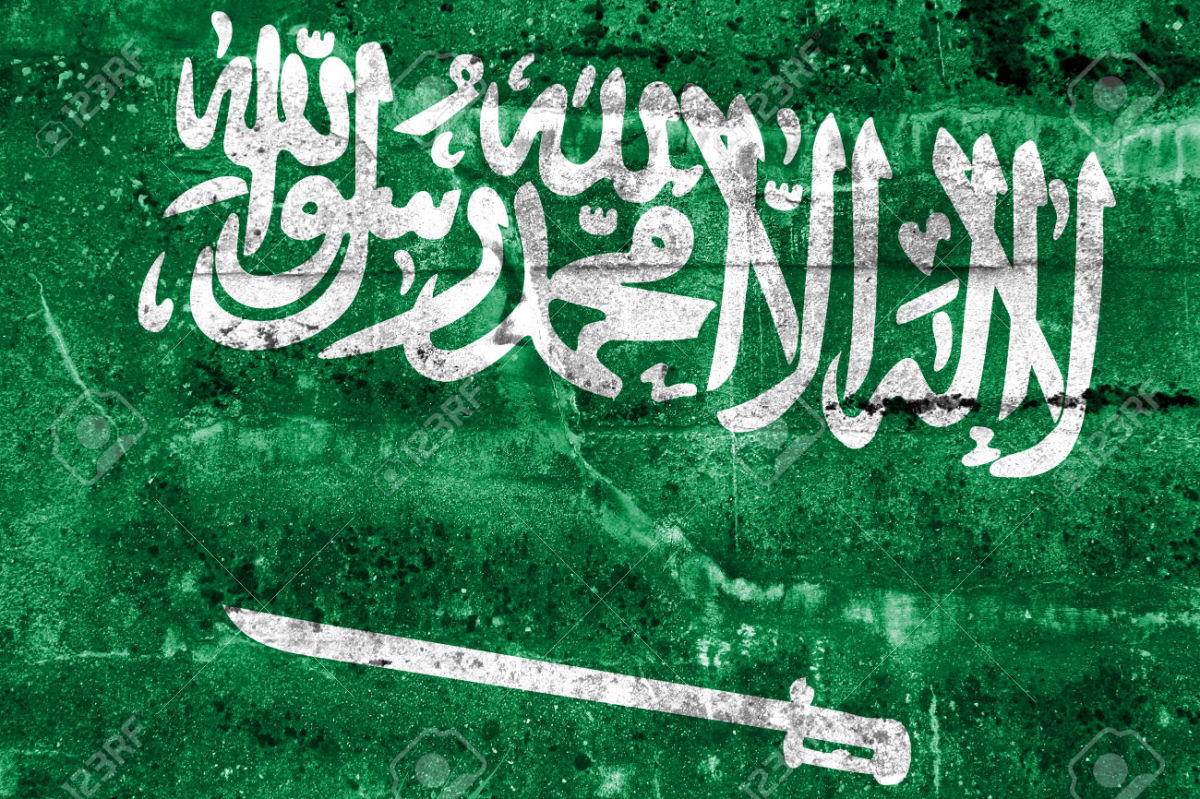Islamic Banking: Its Structure, Growth, and Influence in the International Market
A Country Thriving Under Islamic Banking

Abstract
Islamic banking focuses on rules and regulations set forth by one of the five tenants established in the Qur’an, or the Islamic Holy Book. This financial system wants to fulfill the teachings of the Holy Book while still making money through the system of businesses. According to Zakah, Muslim’s are not to be greedy. This helps guide the tenants of Islamic banking. This means no interest that can be charged on business deals or not riba. This produces a problem, but discussed in this paper is how the credit crisis did not affect the Islamic banking industry. The ability to rebound during such a global crisis, Islamic banking showed that the banking can compete against the conventional banking, just with a different set of rules and regulations. This shows that there is bound of be growth in the international market with the Islamic banking industry.
Introduction
Islam means peace and submission. Muslims try to achieve peace within their life. They want peace in their life as well as their afterlife. Islam is a religion based on revelation that believes in One God and the guidance revealed by God to the prophets (Qur’an 3:84).
The Muslims follow a Holy Book called the Qur’an. They believe that this text was created through a series of revelations. The words were revealed in Arabic to the Prophet Muhammad throughout 23 years. They were revealed to the Prophet Muhammad by the Archangel Gabriel. This all happened within the 7th century. The Qur’an consists of around 600 pages. Many memorized the Qur’an and the first Qur’an was put into writing only two years after Muhammad’s death. This gives the Qur’an historical authenticity, which helps solidify the authenticity of Islamic banking and the tenants behind Islamic banking.
One of the five pillars of Islam is Zakah, which is the purification of wealth. Islamic worship is not just for spiritual reasons. Much like tithes in the Christian faith, the Muslims ask that other Muslims do as much as they can, around 2.5 per cent of their wealth for the less fortunate. Those who can afford the annual payment of 2.5 per cent of their net savings and assets a year must do so as a purification of one’s wealth. This helps the poorer sections of the community. Islam always wants Muslims to do whatever they can to help the poor. Throughout the tenant of Zakah, the Qur’an mentions things such as riba or interest. This tenant of Islam is the tenant that leads the Islamic banking industry. The problem that the industry faces is how does a company or person make money while still staying faithful to the tenants set forth in their religion?
Islamic Banking Structure
Banking
history. Islamic accomplishment in finance has arisen since the economics emergence during the prophetic period of Prophet Muhammad. Islamic discipline is rarely discussed, but the best way to describe Islamic banking is to understand the beginning of Islam and the tenants that the religion is based on. Islam is believed to be the seal of all religions (Sorenson, 2008). There are three Holy Books that cover moral and spiritual teachings, the Talmud for Judaism, the Bible in Christianity, and the Qur’an in Islam. But the Qur’an does something else. It covers life and even business. Therefore, Islam is wide-ranging (Mohammad & Shahwan, 2013). The Qur’an may object against interest, which makes Islamic banking difficult; however, there are many tenants of banking written into the Qur’an that are overlooked in arguments at times.
According to the Prophet Muhammad, the pursuit of business is not inferior, rather it is honorable. The Qur’an is filled with verses using language of trade as well as chose a prophet who was a trader by profession. An example from the Qur’an is “Oye who believe: Eat not up your property among yourselves in vanities; but let there be amongst you traffic and trade by mutual good will (Qur’an 4:29).” Islamic sharia purifies business transactions. The market for sharia compliant financing transactions has grown significantly in the past years
literature review. Mohammad and Shahwan (2013) argue that Islamic Banking has a dilemma because of the original rejections by the Qur’an and the acceptation of interest; however there are over 500 Islamic banks which follow the laws or sharia. In order to get around charging interest, rather they gain money on the principle on the reward made by the deposits and the investment those deposits were invested into to create profit. Must like the original research done, Islamic banking is done because of laws put upon the people by the religious book the Qur’an. However, what are not mentioned are the exact names of the laws that need to be followed. These terms are sharia, hamaam, riba, and that just starts with the complexities of Islamic banking. After delving into the complexities of Islamic banking, is it clearly seen, that one article, research project, or even book could even touch the surface of all of the laws those within the Islamic banking industry need to know in order to follow their laws while still making money (Mohammad & Shahwa, 2013).
Mohammad and Shahwa (2013) suggest that the banking industry is growing at a rate of 15% to 20%, and this can be backed up with the information obtained about the Pakistani banks and the rate in which they are growing. IBI has kept steady earnings. Eventually the Operating Expense to Gross Income increase to 62% has risen higher than the average of the industry (Kazmi, 2012)
Kazmi (2012) explains the foreign words used to explain the laws and different rule and regulations of Islam. The banking of Islam uses the same laws as conventional banking; rather it uses a few nuances that make Islamic banking unique. Islamic banking has the same goal as conventional banking. The team wants to get customers in to help raise money to invest in the bank; however, there is a catch. Islamic banking not only operates within Sharia, but within Fiqh al-Muamalat, which are Islamic rules on transactions (Islamic finance and banking: some basic concepts, 2009). Islamic banking activities must be consistent with the Sharia (Kazmi, 2012). Many of the principles on which Islamic banking is based are commonly accepted all over the world, for centuries rather than decades. Islamic banking goes hand-in-hand with Sharia law. This is because Sharia law puts certain fixations and prohibitions on fixed and floating payments as well as the acceptance of interest, also known as Riba for money that is loaned. Furthermore, when goods are invested in that are against Islamic law this investment is considered Haraaam, or against the law. Because of such laws, only since the late 20th century has Islamic banks started popping up throughout the Middle East (Kazmi, 2012).
In general, the commercial banks call it interest; the Islamic banks call it profit for transaction. Islamic banking is basically rent-to-own. So what they do is essentially create a loan. The loan is then made into that trust. Then from that trust there is a lease-to-own agreement between the trust and the trustee. The commercial banks call it interest. The Islamic banks call it profit for transaction, in order to get around the rules against riba in the Qur’an (Phelps, 2012). Furthermore, the Islamic banking is established as being a different format. It is like a conventional loan within the banking industry, but the interest has to be done in a different way in order not to break the tenants of the Qur’an.
Bonds
history. Sharia law makes sure religion and economics go hand-in-hand. (Mohammad & Shahwan, 2013). To further this conclusion, the key concept to be looked at this week is Islamic bonds. Islamic bonds are a subsection of Islamic banking.
Islamic bonds, also known as sukuks, are fixed amounts that allow a certain amount of ownership in assets. Through this, the holders of the sukuk have ownership. Sukuks are similar to Western bonds. However, a sukuk must be held because a traditional bond is interest bearing, and this interest would go against the Islamic sharia law. In order to get around the Islamic law, a sukuk is established (Azmi & Vishwanath, 2009). Islamic bonds are divided into three different types of bonds known as mudaraba, musharaka, and ijara (Ellis, 2012).
literature review. According to Valdez and Molyneux (2010), Islamic bonds are issued similarly to the Islamic sharia law. Commercial banks issue bonds which gain interest. Sukuks are different. They do not have interest payments. Valdez and Molyneux (2010) make the claim that before the credit crisis in August 2007, the Islamic bonds were among the fastest growing instruments; however, like anything else in the crisis, they fell. The textbook stated that Moody had a forecast of a $120bn increase in sukuks by 2012.
However, it is 2013 now. So it is important to look at where the sukuks have gone since the crisis in 2007. In March of 2013, Dubai Islamic Bank, a sharia- compliant lender based out of the United Arab Emirates, issued a $1 billion sukuk (DIB issues $1b Islamic bond, 2013). The sukuk has come a long way. Though they dropped as discussed in the textbook, sukuks are essential to the Islamic world, so they have not disappeared. Before the sukuk, Islamic countries had to get Western capital to fund a major project. This was because interest was prohibited. Now with the sukuk, Islamic nations can try to keep their money within other Islamic companies. However, the sukuk is still a fraction of the Middle East debt. In fact, from 2002-2012, some Islamic governments issued a sukuk and conventional bond within a year of one another (Ellis, 2012).
Azmi and Vishwanath (2009), breaks down the definition and characteristics of a sukuk. Furthermore, the article discusses the problem with riba (interest), and it gives an overview of the market. The article compared and contrasted the sukuk with conventional bonds, which do charge interest. The types of sukuks are discussed along with case studies on the separate sukuks and tables that give examples of the sukuks.
As mentioned earlier, a sukuk is a fixed income entity. Sukuks consist of over $700 billion in assets managed by the Islamic investment principles (Azmi & Vishwanath, 2009). Sukuks began in Malaysia in 1990. This was a $30 million issuance by Shell Malaysia. The global sukuk market did not start until, 2002. By 2007, the market was at $51.5 billion, a rise of 90% from 2006. A conventional bond is essentially a promise to pay a loan, while a sukuk is a partial ownership. The sukuk can be a partial ownership in different things, thus creating different types of sukuks. A partial ownership in a debt is a sukuk murabaha. A partial ownership in an asset is a sukuk al ijara. A technique of this is binding a promise to repurchase certain assets in order to reach the achievement of capital protection without having to have a loan. A partial ownership in a project is a sukuk al istisna. A partial ownership in a business is a sukuk al musharaka. A partial ownership in an investment is a sukuk al istithmar.
To conclude, sukuks are a way to mobilize fresh funds. In banking terms, sukuks are a safe way to invest because they have assets to back them.
Finance
history. Islamic accomplishment in finance has arisen since the economics emergence during the prophetic period of Prophet Muhammad. Islamic discipline is rarely discussed, but the best way to describe Islamic banking is to understand the beginning of Islam and the tenants that the religion is based on. Islam is believed to be the seal of all religions (Sorenson, 2008). There are three Holy Books that cover moral and spiritual teachings, the Talmud for Judaism, the Bible in Christianity, and the Qur’an in Islam. But the Qur’an does something else. It covers life and even business. Therefore, Islam is wide-ranging (Mohammad & Shahwan, 2013). The Qur’an may object against interest, which makes Islamic banking difficult; however, there are many tenants of banking written into the Qur’an that are overlooked in arguments at times. Islamic finance products have Ijarah, which is a type of mortgage financing, which is a long-term financing, which has helped the Islamic Finance business (Ajooj, 2012).
literature review. According to Valdez and Molyneux (2010), the Islamic Finance has been holding assets of $1,3000bn since the global credit crisis. These banking activities have been covering the globe from the East to the West from the Middle Eastern countries to the Americas. They have been able to achieve this through sukuk bonds that have helped with the Sharia-compliance investment services. Successful operations of Islamic Finance have occurred in Pakistan, Iran, Malaysia, Saudi Arabia, Bahrain, and even more parts of the Western world combined (Ajooj, 2012). The authors argue that the Islamic banks have had a rapid growth in recent years, with a growth of 2.0%of the total assets of the top 500 banks in the Western banks, including non-Islamic banks (Ajooj, 2012).
To validate the claims made by the Molyneux, Islamic finance has, indeed, see great growth throughout the years of the economic crisis. In fact, 1100 institutions offer Islamic financial services. These include large Western known banks, such as HSBC and Citigroup (Ajooj, 2012).
Furthermore, in Malaysia, the people argue that the Islamic financial system is the best option to help with the global economy to be put on the back track according to Dr. Sudin Haron, chairman of the Russian Centre for Islamic Economic Finance. This is because too many people see the manipulation of the interest rates and in the Islamic Finance, this is prohibited, which helps with condemning the manipulation, because Interest rate is condemned by Syariah, or Islamic principles (Malaysian scholar: Islamic finance best option to restore global economy, 2009)
Financial services vary from market to market. These financial markets vary along with the continent in which they arise from. For this case study, studying the African Islamic finance market will be examined. This financial market is based on risk and reward sharing. It is otherwise known as Islamic finance. Interest (riba) and deception (gharar) which exists in financial transaction are not allowed in Islamic Finance. They have resulted in a rise of $3 trillion; however, Islamic finance does not allow these to occur, riba and gharar. It is against Sharia law (Parker, 2013).
Through this, 26 African nations have benefited from the Islamic financing. Though financing has been very prominent in middle-eastern countries, Africa is now on the forefront Islamic Finance. The Islamic Finance works through social funding and the acceptance that African is at the core of the global vision for Islamic finance (Parker, 2013). In fact, the Arab Gambia Islamic Bank, 1996, was about to collapse, but in 2010 it was rescued by a 98% equity investment by the FinBank of Nigeria, all Islamic Finance banks. The African nations are benefiting from the Islamic Finance, but the true power of the Islamic financing is untapped, and if the private sector can be tapped into, the potentials are endless (Parker, 2013).
Islamic Banking Growth
Banking
One example of the growth of Islamic banking recently has been the Islamic banking Industry (IBI) started ten years of expansion of branches into different cities in the country of Pakistan. In fact by the first quarter of FY12 IBI there were 905 branches in 76 cities. This meant there were 19 new branches. In fact, IBI has kept steady earnings. Eventually the Operating Expense to Gross Income increase to 62% has risen higher than the average of the industry (Kazmi, 2012)
In a theoretical modern day view, Islamic banking is not the same as conventional banking because of the lack of interest law, or riba. Riba is prohibited in Islam. Therefore, banks do not allow a fixed rate of return on deposits and are not allowed to essentially charge interest on loans. The feature that is unique to the Islamic banking is the profit-and-loss sharing (PLS). This is based on the mudarabah (profit-sharing) and musyayakah (joint venture) concepts within Islamic banking (Pakistan: Banking license policy revised, 2011.) Under this PLS paradigm, the assets and liability of Islamic banks are integrated. They are integrated by borrowers share profits and losses with the banks. The banks share the profits and losses with the ‘customers’ to the bank (Pakistan: Banking license policy revised, 2011.) Therefore, the Islamic banks are, for all intents and purposes, following sharia law as well as potentially being better poised to manage the ability to absorb any major shocks that may come to them in the modern day economic hardships.
Bonds
Just one example of many of the use of Islamic bonds, or sukuks, within the current market, is the case in Egypt. Egypt has been suffering financially for quite a while. It has helped lead to the overturning of two presidents within two years. Now an impressive $12bn sukuk has been established. The country’s weak finances mixed with low yields in the capital market made Egypt prime property for a sukuk. This sukuk should be issued within early 2014. The sukuk will work as a loan of sorts. It will fill the deficit, which is at 10.5% of the GDP. The rest of the sukuk will be used to finance infrastructure and other project to help with the development of the country (Martin, 2013).
However, the sukuk is not a guarantee fix to the economy. Much like any other loan, just paying something off will not necessarily make someone want to invest in the country. The political tensions will more than likely not help the situation of gathering international investors (Martin, 2013).
Finance
Islamic Finance, or Islamic Banking, is applied in everyday life from Eastern to Western Countries. With such a large amount of people receiving Islamic Finance, there is bound to be a lot of problems as well as successes that follow. Africa has been established as the new growing business for the Islamic Finance business (Parker, 2013). The Islamic Finance business is a $1 trillion global industry, which, if turmoil form the economic problems get work, the assets could start to crumple.
For instance, the Islamic finance industry in the United States. This industry faces even more challenges. They must conform to Sharia law in order to be Islamic compliant, but state and federal banking regulations keep them on a tight leash. Furthermore, in order to get sharia compliant product, added costs from the research, implementation and development of products within the United States in order to follow the laws of Sharia are necessary (Qadri, 2009). Even with these increased costs, people are considering Sharia compliant banking because of the current economic situation occurring around the world. The losses have been great, and people are looking for conservative, stable banking, and this is what Sharia compliant products provide them with (Qadri, 2009).
Islamic Banking in the International Market
Since 2000, Islamic banking has slowly, yet surely, made it into the international market. Though Islamic banking focuses on tenants throughout the Qur’an that focus on certain laws that ban things such as interest and funding other things that are against the laws and tenants of Islamism, Islamic banking has gotten creative. Take for instance, there is a ban on interest in Islam, also known as riba. Because of riba, finding western funding has been difficult for Islamic countries. This need caused the invention of a new financial instrument that works within the laws of Islam yet still provides similar funding as a conventional bond. This new financial instruments has provided the ability for more Muslim investors, which helps keep the money within the same region instead of seeking Western funding. So the banking industry has gotten creative, in order to get around the basic rules and tenants of the rules of the Qur’an. Furthermore, there is a global market for the sukuk, which was a way to get around the riba. While calculating the size of the sukuk market is difficult because there is no regulatory body, it is still used as a way for the Islamic Banking to make its way into the International market and growth within the market (Ellis, 2012).
An example of Islamic banking making its way into the international market was the 2008 growth. In 2008, Islamic banking grew to $951 billion within 50 countries. The Persian Gulf Area has 82% of Islamic finance, while South Asia has 13% followed by Europe, North America, and Africa. Islamic banking operates within the same arena as conventional banks do. There are similarities and differences. There are not overdrafts in Islamic banking, and there is a limit put on credit cards and the way money is loaned. This is a difference to conventional banks. This is because extra charging is not allowed under Murabaha while it is allowed under conventional banking. Islamic banking may not provide financing for an activity against Sharia law. Despite difficulties in Islamic banking, the banking has grown 76% a year in Pakistan for the past six and a half years (Hanif, 2011).
In 2000, the Islamic financial industry introduced a bond known as a sukuk. In that year, there were only three of these sukuks. They were only worth $330 million USD. However, the sukuk showed to be beneficial to Islamic banking. Therefore the sukuk has caused a progression in Islamic banking (Amba & Almukharreq, 2013). They have become a high demand for investment for businesses in the Islamic world. While years progress, progression in need for money is necessary. This is when diversification or a growth in the sukuk is essential. It is essential for the Islamic banking to grow in the international market. While needing a diversification, the sukuk was the solution. In fact, the growth by 2006, in the sukuk was seventy sukuks with a total of $27 billion USD (Amba & Almukharreq, 2013).
Due to the growth that the sukuk put within Islamic banking, the sukuk has become one of the most important ways to gain financial resources for Islamic governments, but for Islamic based multi-national companies that are compliant to the Islamic code of business or sharia’h law. Just like other banks, sukuks vary with their variety and application, including their period of maturation, investment size, and what type of ownership the sukuk is under.
For example, an extreme important organization is Saudi Basic Industries Corporation (SABIC). This company works within the realm of manufacturing. Their products consist of industrial polymers, compound fertilizers and metals. SABIC is the largest publicly owned company in Saudi Arabia, a Sharia’h law compliant country. The Saudi Arabian government owns sixty percent of the shares. After being the largest worldwide manufacturer of ethylene glycol, it is also a leader in Sukuk bonds, this only to show that it does not matter the size of the company, sukuk bonds are gaining international market recognition (SABIC launches its third sukuk issue, 2008).
There is a successful nature to the Islamic banking industry. The success has grown to support the Islamic banking to support the banking outside of the Muslim central financial markets. The Qur’an stresses business ethics on businesses. Within the Qur’an business money making is a concern but the Islamic banking finds ways to success with greater success while using a model that is owned by their own type of banking. With the combination of a belief system that does not allow financing gambling, anything that deals with pork, the transportation of arms, pornography or alcohol, the Islamic banking industry is still able to show growth. In fact, Islamic banking has become successful by sticking to their beliefs. They do not insult their religion. They do not hold it against a company if they are not part of their religion. In a sense they give a freedom of religion. They have opened their territories to non-Islamic companies. These pieces of Islamic banking help add to how fast Islamic banking can truly grow within the international market. Islamic banking is unique because it can grow quickly and extend into non-Muslim financial markets because of the rapid growth rates (Aldohni, 2008).
Question for Further Questions
There are some questions left from the research for further research in the realm of the Islamic banking. Further research of bonds or sukuks to see how they have shaped the Islamic and multinational marketplace would be an interesting place to start. Furthermore, not all countries have been analyzed about the Islamic banking in each country and the effects of the Islamic banking. Furthermore, an interesting topic would be to analyze the Islamic banking in countries worldwide to the other conventional banking and come to a conclusion and pattern as to how each withstood the credit crisis and how they are going to rebound from the credit crisis.
Years ago, thinking of Islamic banking, and even funding any sort of loan would have been very difficult. However, with the growing popularity of new and innovative banking techniques, a new financial institution a little Western and very Middle-Eastern have shown people can change in their views on any situation. However, how do businesses get around some of the financing in the Qur’an? Further research can include how a sukuk or shariah compliant bank get around owning a gambling center or casino, funding a distillery, or even running a pork farm. Furthermore, how do these subjects fit into the shariah law compliant finance? Also, rent is a question. When banks can not charge interest, how can they collect mortgages while still being compliant with Shariah law?
Islamic banking?
Would Islamic Banking work in America?
Conclusion
The Islamic banking and economics focus on some form of morality. Morality is essential in Sharia’h law especially in the sense that the morality of the financial crisis in the United States is essential. New words are given in Islamic banking that explains the banking and procedures. One new set of words given are gharar (uncertainty) and maisir (gambling). Giving loans and banking has some sort of gamble and uncertainty to it, so the bans on these two entities create an interesting moral dilemma with Islam and banking within Islam. The literature helps concludes that more moral inquiry is needed in the United States economy, to have the economics of the United States work as effectively as the Islamic banking system. Just as there is morality in Islamic life and the Qur’an, there is morality in Islamic banking and everything behind the Islamic banking industry. (Sorenson, 2008).
This paper has discussed the various terminology used to understand Islamic banking. There are different positions behind Islamic banking: finance, banking, and bonds. These positions have caused growth in different ways while still adhering the laws of the Qur’an. This paper is a rudimentary view of Islamic banking, with plenty of room to research more about the banking industry.
Qu'ran
Islam is a religion based on revelation that believes in One God and the guidance revealed by God to the prophets (Qur’an 3:84).
Resources
Aldohni, A.K. (2008). The emergence of Islamic banking in the UK: A comparative study with Muslim countries. Arab Law Quarterly, 22(2), 180-198. Retrieved from http://www.jstor.org/stable/27650617.
Amba, M. S., & Almukharreq, F. (2013). Impact of the financial crisis on profitability of the islamic banks vs conventional banks- evidence from GCC. International Journal of Financial Research, 4(3), 83. Retrieved from http://search.proquest.com/docview/1373239420?accountid=12085
Arooj, F. (2012). Islamic finance. Pakistan & Gulf Economist, 31(15), 12-13. Retrieved from http://search.proquest.com/docview/1022643281?accountid=12085
Azmi, S., & Vishwanath, S. R. (2009, Winter). An overview of Islamic sukuk bonds. Journal of structured finance, 14(4), 58+. Retrieved from http://go.galegroup.com.ezproxy.liberty.edu:2048/ps/i.do?id=GALE%7CA194474025&v=2.1&u=vic_liberty&it=r&p=ITOF&sw=w
Dib issues $1b Islamic bond. (2013). Pakistan & gulf economist, 32(12), 46. Retrieved from http://search.proquest.com/docview/1327296405?accountid=12085
Ellis, T. R. (2012). The piety premium of Islamic bonds. Middle east quarterly, 19(2), 61+. Retrieved from http://go.galegroup.com.ezproxy.liberty.edu:2048/ps/i.do?id=GALE%7CA327586526&v=2.1&u=vic_liberty&it=r&p=ITOF&sw=w
Hanif, M. (2011). Differences and similarities in islamicIslamic and conventional banking. International Journal of Business and Social Science, 2(2) Retrieved from http://search.proquest.com/docview/904526533?accountid=12085
Malaysian scholar: Islamic finance best option to restore global economy. (2009). BBC Monitoring International Reports. Retrieved from http://www.ft.com/home/us.
Martin, M. (2013). Cairo plans 2014 return to bond market. MEED: middle east economic digest, 57(22), 17. Retrieved from http://rx9vh3hy4r.search.serialssolutions.com/?ctx_ver=Z39.88-2004&ctx_enc=info%3Aofi%2Fenc%3AUTF-8&rfr_id=info:sid/summon.serialssolutions.com&rft_val_fmt=info:ofi/fmt:kev:mtx:journal&rft.genre=article&rft.atitle=Cairo+plans+2014+return+to+bond+market%3A+government+establishes+%2412bn+Islamic+bond+programme+to+plug+deficit.%28ECONOMY+EGYPT%29%28Brief+article%29&rft.jtitle=MEED+Middle+East+Economic+Digest&rft.au=Martin%2C+Matthew&rft.date=2013-05-31&rft.pub=EMAP+Business+Information+Ltd&rft.issn=0047-7230&rft.volume=57&rft.issue=22&rft.spage=17&rft.externalDBID=n%2Fa&rft.externalDocID=335073993¶mdict=en-US.
Mohammad, M. O., & Shahwan, S. (2013). The Objective of Islamic Economic and Islamic Banking in Light of Maqasid Al-Sharia: A Critical Review. Retrieved from http://idosi.org/mejsr/mejsr13(cifwm)13/13.pdf.
Islamic finance and banking: Some basic concepts. (2009, Nov 04). The Financial Express. Retrieved from http://search.proquest.com/docview/618675021?accountid=12085.
Kazmi, S. K. (2012). Islamic banking. Pakistan & Gulf Economist, 31(33), 46-47. Retrieved from http://search.proquest.com/docview/1038148427?accountid=12085.
Pakistan: Banking license policy revised. (2011, Apr 14). Right Vision News. Retrieved from http://search.proquest.com/docview/894965850?accountid=12085.
Parker, M. (2013). Islamic finance: An unstoppable force? African Banker, (25), 24-27. Retrieved from http://search.proquest.com/docview/1431048914?accountid=12085
Phelps, R. (2012). Devil in the details. Bank Director, 22(2), 12. Retrieved from http://search.proquest.com/docview/1009906177?accountid=12085
Qadri, S. (2009, January). Islamic finance: an alternative. Banking & Financial Services Policy Report, 28(1), 9+. Retrieved from http://go.galegroup.com/ps/i.do?id=GALE%7CA192688733&v=2.1&u=vic_liberty&it=r&p=ITOF&sw=w&asid=3ca3debddac862e5de75eac80a87232e
SABIC launches its third sukuk issue. (2008, Apr 30). Middle East Company News. Retrieved from http://search.proquest.com/docview/232800342?accountid=12085
Sorenson, B. (2008). Ethical money: financial growth in the muslim world. American University International Law Review, 23(4), 647–659. Retrieved from https://www.zotero.org/groups/law_of_islamic_finance_bibliography/items/itemKey/J8CS8J2N.
Valdez, S. & Molyneux, P. (2010). An introduction to global financial markets: 6th Edition.
New York, NY: Palgrave Macmillan.







